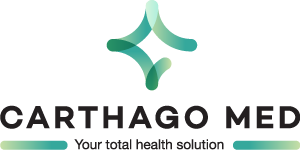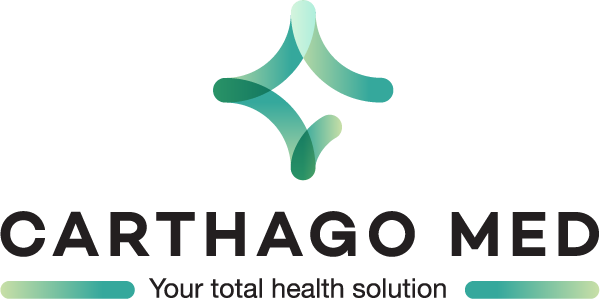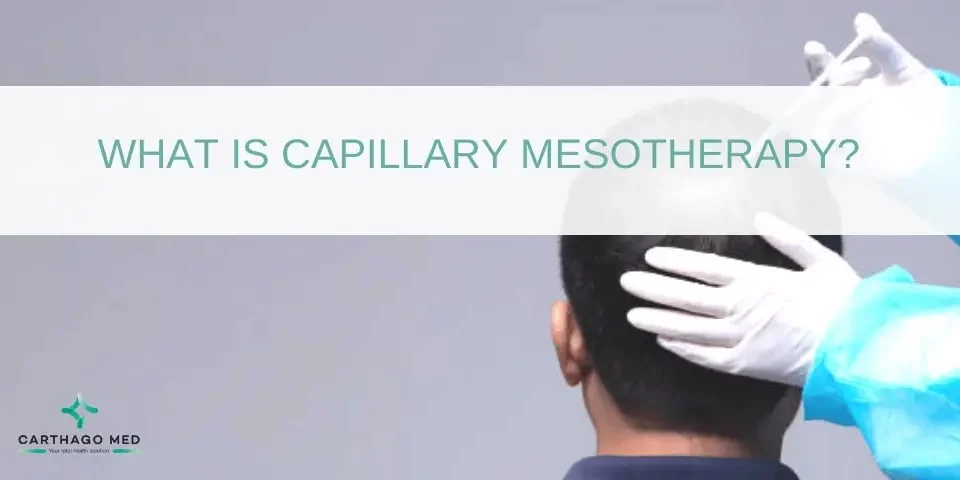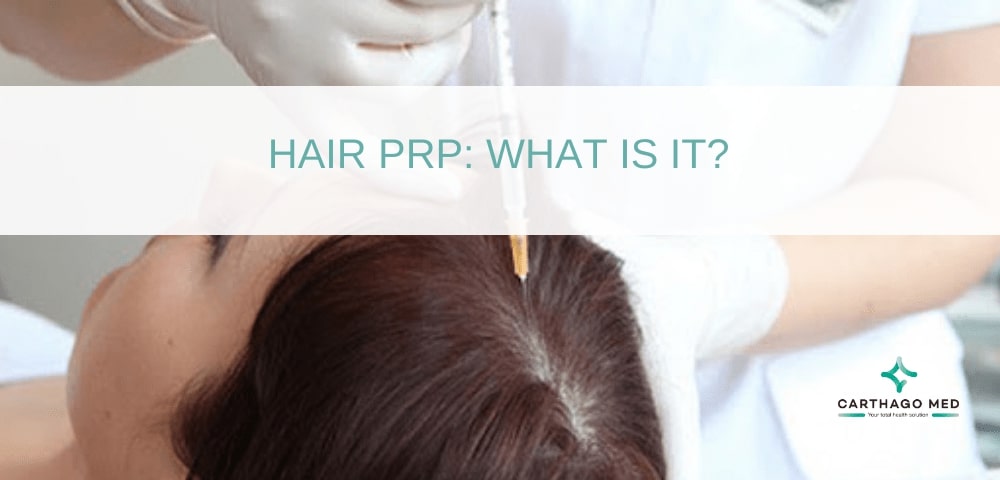
Hair prp : what is it?
PRP treatment is a technique proposed to remedy hair loss. This method consists of using the patient’s own platelet-rich plasma (PRP) to stop the onset of baldness and promote hair growth. This modern cosmetic surgery can effectively treat early hair loss and restore good hair density. Here is what you need to know about this technique: its indications, its principle, and how the operation is performed.
What is a PRP treatment?
PRP is a procedure that involves injections, with platelet-rich plasma being taken directly from the patient. This plasma contains active factors that promotes the growth of hair follicles. The plasma is injected directly into the scalp, which stimulates the hair follicles, resulting in a dense and aesthetically pleasing head of hair. PRP is an effective remedy to prevent androgenic alopecia (baldness) in both men and women. This technique is now offered as an alternative to standard hair transplantation, such as FUE, and can prevent hair loss without surgery or scarring.
Who are PRP patients?
PRP patients, who are individuals seeking a solution to stimulate hair growth, often grapple with various concerns related to hair loss. These concerns may arise from factors such as aging, genetic predisposition, hormonal changes, or other underlying conditions, leading to observations of thinning hair, receding hairlines, or reduced hair density. This treatment appeals to a diverse range of age groups, encompassing both men and women at different stages of hair loss. Considering the health and eligibility of potential PRP patients is crucial, as the therapy involves using the patient’s blood. Generally, individuals in good health are eligible; however, discussing medical history with a healthcare provider is essential to rule out contraindications or underlying health issues that might impact the procedure. Many PRP patients turn to this therapy after trying other hair loss treatments without satisfactory results, viewing it as an alternative or complementary solution to address their specific hair restoration goals. PRP patients are characterized by their understanding of the treatment process. Realistic expectations are key among these patients, acknowledging that while PRP shows promise in promoting natural hair growth, individual responses to the treatment may vary.
A critical aspect of the journey for PRP patients is the consultation and assessment with a healthcare professional specializing in hair restoration. This process entails evaluating the patient’s overall health, discussing medical history, and assessing the suitability of PRP therapy for their specific condition. Furthermore, commitment to the recommended treatment plan is paramount, as PRP therapy often involves multiple sessions with maintenance treatments at intervals. Patients dedicated to following through with the prescribed plan are more likely to achieve potential benefits. It is important to underscore that the effectiveness of PRP therapy may vary among individuals. Therefore, the decision to undergo this treatment should be made in consultation with a qualified healthcare professional who can provide personalized advice based on the patient’s unique circumstances and health status.
Hair PRP: what you need to know before the operation?
You will need 3 or 4 sessions of PRP treatment in order to achieve a satisfactory result. These sessions will need to be spaced out over several months (usually 3 months), as you need to wait about 2 weeks between each session. Before embarking on a PRP hair treatment journey, individuals must navigate through several crucial procedures and considerations to guarantee a seamless and successful operation. The initial step involves a comprehensive consultation and evaluation with a qualified healthcare professional specializing in hair restoration. During this pivotal stage, the healthcare provider meticulously assesses the individual’s medical history, examines the extent of hair loss, and determines the suitability of PRP therapy. A critical aspect of this process is the disclosure of a comprehensive medical history by the patient. This includes providing information about existing health conditions, medications, supplements, and any previous hair loss treatments. will have to provide various medical examinations and analyses that you (blood tests, health check-up, etc.).Such disclosures empower the healthcare provider to make informed decisions about the PRP procedure and evaluate the overall health of the patient.
Following the evaluation, an eligibility assessment becomes paramount. Certain medical conditions and lifestyle factors, such as being on blood thinners, a history of alcohol or drug misuse, acute or chronic infections, and cancer, may impact eligibility for PRP treatment. In such cases, alternative hair restoration options may need exploration. Preoperative instructions play a crucial role in preparing individuals for the PRP operation. Specific guidelines, encompassing fasting before the procedure, avoiding medications or substances that could interfere with treatment, and general preoperative care, are communicated to the patients.Understanding the intricacies of the PRP procedure itself is equally essential. A clear comprehension of these steps helps alleviate any preoperative anxiety or concerns. Communication between the patient and the healthcare provider remains a linchpin in this process. Open and transparent communication allows patients to express concerns, seek clarification on the procedure, and establish a mutual understanding of expectations and goals. Financial considerations also come into play before the operation. Individuals should be cognizant of the costs associated with PRP for hair loss, covering both initial treatments and potential maintenance sessions. Checking with insurance providers to determine coverage adds another layer of informed decision-making to the process. In essence, navigating through these procedural and considerational checkpoints ensures a well-informed and prepared approach to PRP hair treatment.
How is a PRP hair transplantation procedure carried out?
The procedure is performed under local anaesthetic and lasts on average 60 minutes. First, a small amount of blood will be taken from the patient who is to undergo the procedure; this blood will then be centrifuged and prepared in the laboratory in order to collect the platelet-rich plasma. Once the necessary preparations have been made, the plasma will be injected directly into the patient’s scalp with a fine needle. Several sessions will be necessary to maintain the hair and to keep the same result over time.
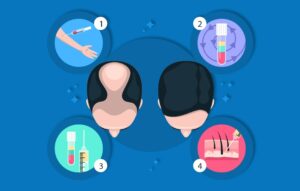
What are the after-effects of the PRP treatment?
Usually there is no pain after the operation, and during the procedure the area of the skull operated will be anaesthetised, the patient will feel almost nothing either during or after the operation. The patient who has undergone this operation will not need a recovery period and will be able to return to work and sport quickly.Since the platelet-rich plasma is collected directly from the same patient who will perform the operation, there is no risk of rejection. There are virtually no side effects following the operation, as the procedure is safe and the injected plasma is biocompatible, because it is already present in the patient’s body. Some of the predictable side effects of the procedure include some swelling in the operated area (which will eventually diminish in the weeks following the operation) and some inflammation, but nothing that cannot be easily treated.
What recommendations should be followed after undergoing PRP treatment?
After undergoing Platelet-Rich Plasma (PRP) treatment for hair loss, it’s crucial to follow specific recommendations to optimize results and minimize potential side effects. Here’s a comprehensive guide:
To begin with, in the first few days following PRP treatment, it’s advisable to avoid vigorous physical activities, heavy lifting, or strenuous exercises. This precautionary measure helps prevent excessive sweating and potential irritation at the injection sites. Moreover, adopting a gentle hair care routine is paramount. Using mild shampoos and conditioners, and refraining from vigorous brushing or combing for a few days will aid in avoiding any trauma to the treated scalp. In addition to physical precautions, maintaining adequate hydration is essential for overall well-being and can contribute significantly to the effectiveness of PRP treatment. Therefore, it’s recommended to drink plenty of water to support the body’s healing process.Furthermore, protecting your scalp from direct sunlight is imperative. To achieve this, it is advised to avoid prolonged sun exposure and, when necessary to be outdoors, wear a hat or use a scarf to shield your scalp from the sun’s harmful rays. Additionally, steering clear of saunas, hot baths, and hot tubs for at least a week post-treatment is crucial, as excessive heat can dilate blood vessels and may interfere with the healing process. If your healthcare provider has prescribed any medications or topical treatments to complement the PRP therapy, strict adherence to their recommendations is essential. Refraining from smoking and limiting alcohol consumption during the recovery period is also advised, as these substances can potentially hinder the healing process and affect the overall success of the treatment.
Moreover, being mindful of your diet plays a pivotal role. Consuming a well-balanced diet rich in vitamins and minerals that support hair health, such as foods high in iron, protein, and vitamins, particularly Vitamin C, can contribute to optimal results. It’s equally important to monitor the treated area closely for any signs of infection, such as increased redness, swelling, or persistent pain. If any concerning symptoms arise, promptly contacting your healthcare provider is crucial. Additionally, adhering to scheduled follow-up appointments with your healthcare provider allows for the monitoring of progress and any necessary adjustments to your treatment plan.
When can I see the results?
After the first treatment, you will have to wait a few weeks before you can see the results of the PRP treatment. However, for the regrowth to be truly optimal, it is necessary to wait for the results of the third session (which will take place after a few weeks of the first treatment). The patient then benefits from a better hair density, and the hair has an aesthetically pleasing appearance and a good distribution on the whole scalp.







